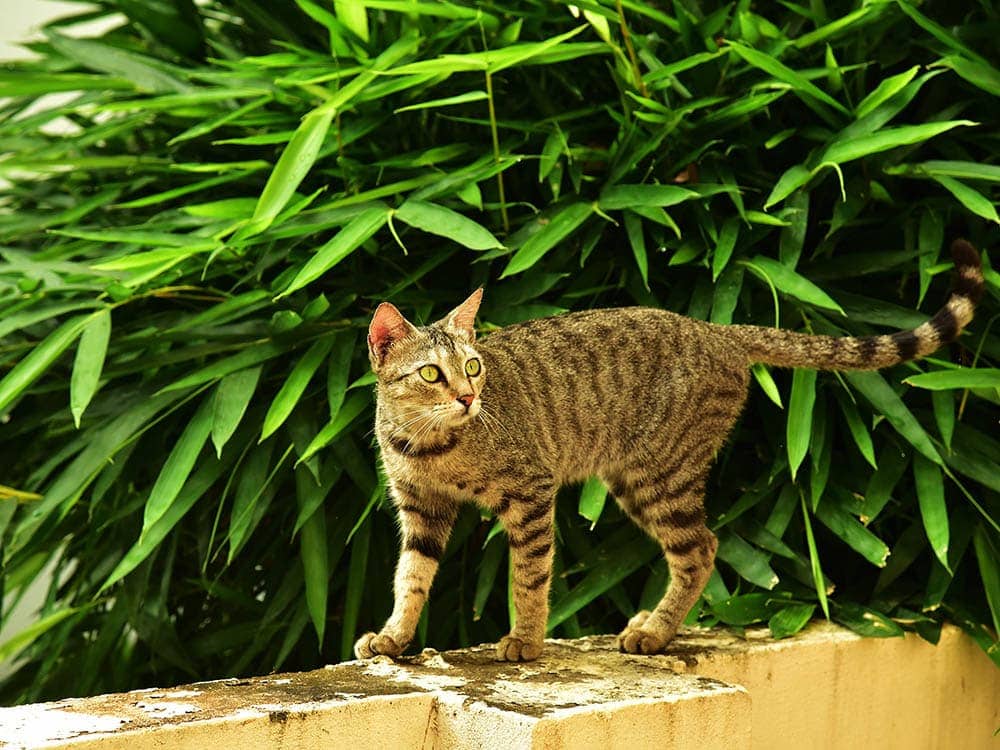How to Transition Your Cat to a Raw Food Diet: 6 Vet Reviewed Tips
By Jessica Kim
Updated on
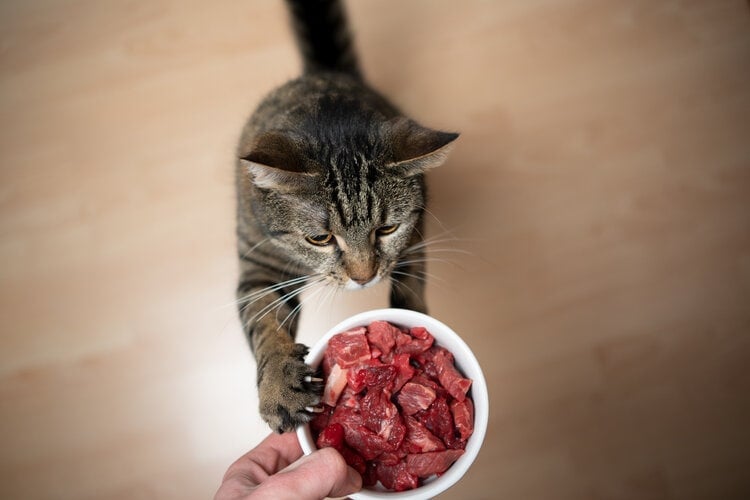
These days, you can find all kinds of diets for cats. As all cats are unique from each other, different diets can have beneficial effects. Learning the benefits and risks of each diet and talking to your vet will help you make an informed decision about which is best for your cat.
Cats are creatures of habit, and many are known to be picky eaters. Therefore, it can be challenging to switch them over to a raw food diet. If you have been facing challenges with transitioning your cat to a raw food diet, you can try the following tips to make the switch a smoother process.
The 6 Tips to Transition Your Cat to a Raw Food Diet
1. Consult Your Veterinarian First
A raw diet may not be right for every cat and not for every pet parent. Raw cat food companies often market their food as a cat’s natural diet. However, traditional dry cat food is safe for cats to eat and provides many nutritional benefits.
Studied benefits of raw food diets include changes in the intestinal microbiome, improved stool quality, and better digestibility. However, raw food diets can also put cats at a higher risk of getting food poisoning. So, cats that are used to grazing rather than scheduled feeding times may not adjust to a raw food diet.
Raw food diets are also more expensive than other types of cat food, so make sure to consult your veterinarian beforehand to determine if switching your cat to a raw food diet is both necessary and beneficial.
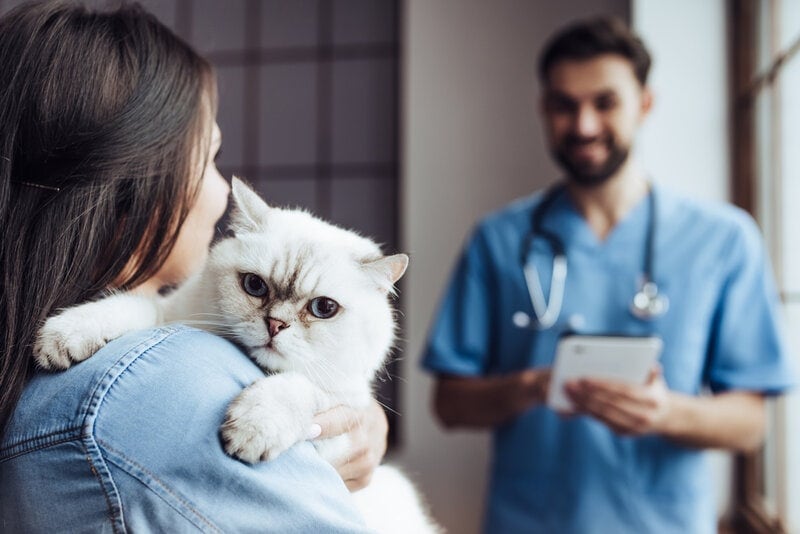
2. Make the Transition Slow and Unnoticeable
Cats like consistency and may feel unsettled with sudden changes. Cats that have been eating dry food may not want to venture out to raw food, and they can also get an upset stomach if they switch too quickly. This can cause them to avoid raw food further.
It’s better to go slower rather than faster while transitioning to raw food. You can start by feeding your cat raw food as a treat. After a few days, mix a small teaspoon of raw food with your cat’s kibble. It should be an extremely small amount that doesn’t really affect the appearance or texture of your cat’s food.
You can start to add an extra spoonful and slightly reduce the amount of kibble if your cat eats its food with small traces of raw food in it.
Completing the transition to raw food can take a couple of weeks, but you can take your time and let it take several weeks, especially if you have a very picky cat.
3. Buy Raw Food from Reputable Companies
One of the risks of raw food is food contamination. So, only purchase food from reputable cat food companies. Companies that specialize in raw cat food will prepare the meals in safe and sanitary conditions. The food should always be complete and balanced, which will ensure that your cat’s daily nutritional needs are being met.
Always look for an Association of American Feed Control Officials (AAFCO) label on the food packaging. This label ensures that the food contains all the essential nutrients a cat needs and meets expectations for food that’s safe for cats to eat.
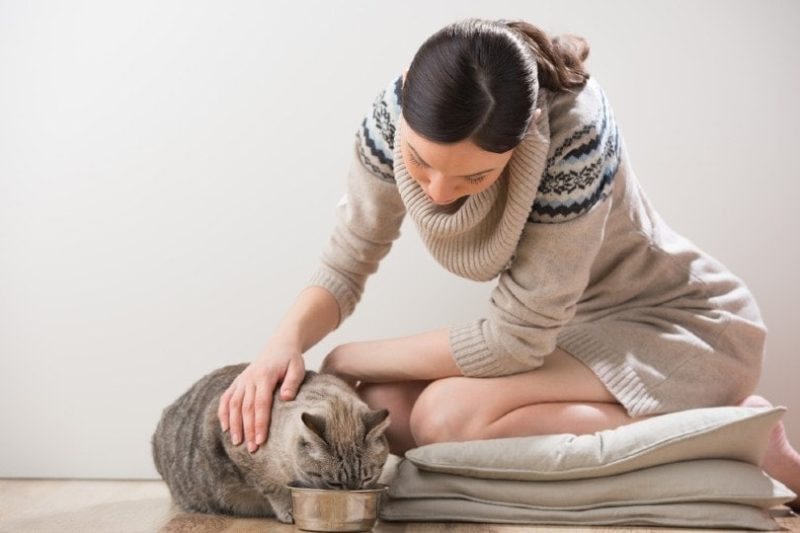
4. Put Your Cat on a Feeding Schedule
Timing becomes very important with raw food. To avoid food poisoning, raw food shouldn’t be left out for more than 30 minutes. Cats that are used to grazing and eating whenever they want may have a hard time transitioning to a feeding schedule. However, it’s important to stay consistent and not feed your cat whenever it begs because this will only encourage and reinforce begging behavior.
It’s best to transition your cat’s routine to a feeding schedule slowly. So, start by laying out several smaller portions of food at about the same time of day. As your cat eats, you can begin reducing the number of times you leave out food and increase the amount of food you serve. Also, start reducing the amount of time that the food is available for your cat. Incrementally your way to about two or three meals a day.
5. Transition to Wet Food First
Sometimes, the jump from dry food to raw food is too large and may be uncomfortable for cats. So, you may need to use wet canned food as an intermediary step before fully transitioning to raw food.
Once your cat gets used to wet food, you can slowly incorporate raw food. Eventually, your cat will get used to eating just raw food. It sometimes helps to sprinkle a small portion of your cat’s favorite treats on top of the meal to encourage your cat to eat.
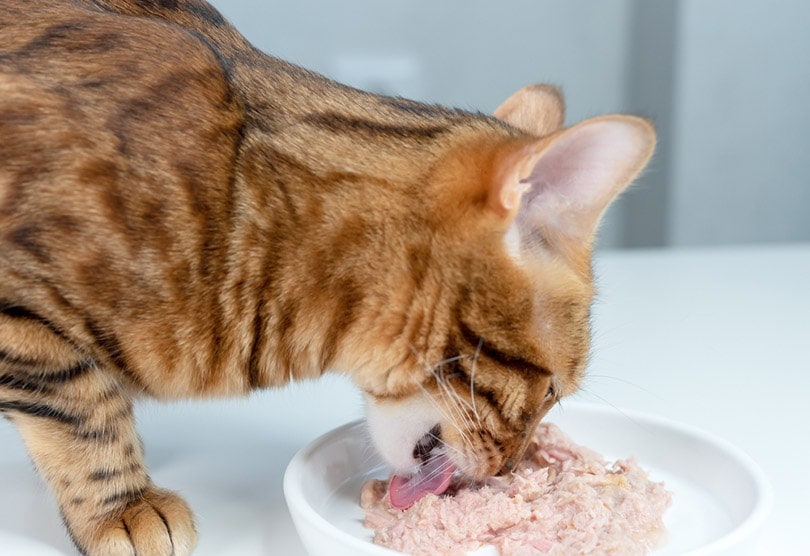
6. Try Using Raw Freeze-Dried Food
If your cat is being fussy with wet food, it might be helpful to feed it raw freeze-dried food. This type of cat food has a similar crunch as dry cat food, and your cat may be more comfortable eating it over wet food. As your cat gets used to raw freeze-dried food, you can slowly incorporate the raw food you intend for your cat to eat long-term.
Potential Benefits of Raw Diets for Cats
Raw cat food consists of uncooked ingredients from animal sources. The idea is that cats are obligate carnivores and raw diets more closely mimic their natural diet in the wild.
Raw diets tend to be very rich in protein and don’t contain any fillers or binding ingredients that dry cat food commonly uses. They also have more water content, so it’s a great way to add water to a cat’s diet and keep them hydrated. If you switch from dry food to raw, fresh or wet food you will notice a change in your cats drinking habits and this is absolutely normal.
It’s often recommended that cat owners purchase raw food diets prepared by certified companies rather than preparing homemade food. This is because homemade food has higher risks of being prepared incorrectly, and it’s easier to miss essential nutrients that cats need to consume daily.
Raw diets prepared by reputable pet food companies will meet AAFCO dietary requirements and have recipes that provide a complete and balanced meal for cats. It’s important to note that there isn’t any scientific study that proves that raw cat food has better nutrition than other kinds of cat food. Of course, the ingredients are usually higher quality, but you could essentially find similar benefits by switching your cat to high-quality fresh or wet food rather than transitioning over to raw food.
Conclusion
It’s normal for your cat to take some time to get used to new food. To help your cat smoothly transition to raw food, introduce the new food slowly and in unnoticeable amounts.
While there are many claimed benefits of feeding raw food diets to your cat there is also some controversy with this feeding style. So, make sure to speak with your veterinarian to determine that a raw food diet will greatly benefit your cat before starting the transition to a new raw food diet.
Featured Image Credit: Nils Jacobi, Shutterstock


